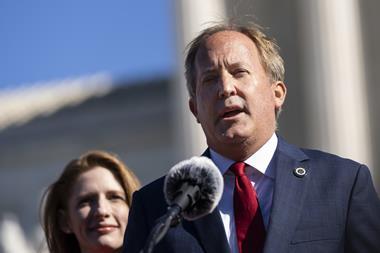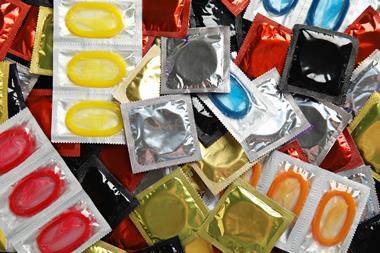The US’s first national and enforceable drinking water standards for six per- and polyfluoroalkyl substances (PFAS) were announced by the US Environmental Protection Agency (EPA) yesterday. The long-awaited final rule sets legally imposed limits for these chemicals. Although environmental and health organisations celebrated the new regulations, the chemical industry and water utilities have serious concerns.

In the new regulations, the EPA has set limits on five individual PFAS, and a ‘hazard index’ for mixtures of various PFAS. For the two most well-known and best studied of these substances – perfluorooctanoic acid (PFOA) and perfluorooctane sulfonic acid (PFOS) – the limit is 4 parts per trillion (ppt) and 10ppt for perfluorononanoic acid (PFNA), perfluorohexane sulfonate (PFHxS), and hexafluoropropylene oxide-dimer acid (HFPO-DA) – also known as GenX. Combinations of two or more of PFNA, PFHxS, GenX and perfluorobutane sulfonate (PFBS) also face limits.
According to the EPA’s estimates, there are nearly 15,000 substances that belong to the PFAS family of widely-used chemicals that persist in the environment and bioaccumulate. They are attractive to manufacturers because of their unique properties that impart characteristics like oil, grease and water repellence, as well as lubrication. But these chemicals have been linked to significant health problems like immune system impairment, cardiovascular damage and cancer.
Last year, the EPA proposed the first-ever nationwide drinking water standards for the same six PFAS – suggesting a limit of 4ppt in water for PFOA and PFOS, as well as limits on combinations of PFBS, GenX, PFHxS and PFNA.
During the summer of 2022, the EPA proposed a drinking water limit for PFOA and PFOS that was 0.004ppt and 0.02ppt, respectively. At the time, the agency also set the health advisory at 10ppt for GenX and 2000ppt for PFBS. Health advisories are not enforceable.
The final standards the EPA just issued represent a dramatic decrease from the 70ppt drinking water threshold that the agency established in 2016 for PFOA and PFOS.
Only about 6% to 10% of the roughly 66,000 public drinking water systems in the US that are subject to its new rule may require action to reduce PFAS to meet these new standards, the EPA estimates. The agency has given all public water systems a three-year deadline to start monitoring and then another two years to implement solutions that enable compliance.
‘Historic and long-overdue’
In conjunction with its final rule, the EPA also announced nearly $1 billion in newly available funding to help states implement PFAS testing and treatment at public water systems and to assist owners of private wells in addressing PFAS contamination.
‘This is a historic and long-overdue move by the United States to set national, legally enforceable drinking water standards for PFAS,’ says Will Dichtel, an organic chemist who studies PFAS at Northwestern University. ‘Although they recognise a long-term health goal of PFAS-free drinking water, the enforceable limits are tough but attainable with appropriate investments in our water systems,’ he adds.
Jamie DeWitt, a toxicologist at Oregon State University, is also enthusiastic. She describes the development as ‘a huge step forward’ in protecting the public from PFAS exposure. ‘Even though this only addresses six individual PFAS, it is anticipated that the technologies instituted to address these six also will remove other PFAS, likely not all PFAS, but additional PFAS not covered by the rule,’ DeWitt explains.
The EPA’s new rules highlight the need for the EPA to start treating PFAS as one class of chemicals and only permit use of the class when absolutely essential, according to Linda Birnbaum, a toxicologist and microbiologist who formerly headed the US National Institute of Environmental Health Sciences and the National Toxicology Program.
Birnbaum, who is a scholar in residence at Duke University’s environmental science and policy division, tells Chemistry World the regulations are ‘reasonable and enforceable’, and will require treatment of drinking water or switching to new water sources. ‘This will all cost money and the Biden administration has allocated some funding for this, which, in addition [to] the litigation settlements against 3M, Dupont, Chemours and Corteva, will help address,’ she says. ‘But water bills will likely increase.’
Meanwhile, the American Water Works Association (AWWA), which represents water utilities and other stakeholders, strongly opposes the rule and is worried that its health and financial impacts are not accurately characterised. The EPA has estimated that compliance with this rule will cost about $1.5 billion annually, but that its quantifiable health benefits will be about the same.
But the AWWA warned that the number of small water systems that will be impacted by the new standard is three times higher than EPA estimates.
There will also be implications for chemical companies and PFAS manufacturers, according to Craig Butt, a senior staff scientist at SCIEX that offers PFAS analysis services. ‘A municipal water company may have to monitor and filter the city drinking water, but the upstream chemical manufacturer will also need to react,’ he says.
The new PFAS rule won’t directly affect chemical manufacturers right away, according to Melanie Benesh, vice president for government affairs at the Environmental Working Group. However, Benesh stated during a 10 April news briefing that she anticipates future rules from the EPA that limit how much PFAS manufacturers can release into the environment. She went on to suggest that water utilities may pressure PFAS manufacturers to restrict the amount of these substances that they emit so they won’t be forced to bear the clean-up burden alone.

















No comments yet